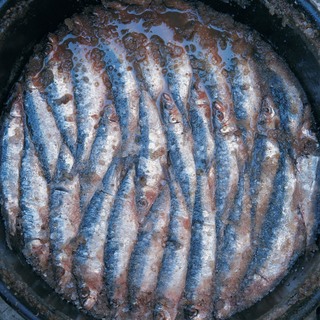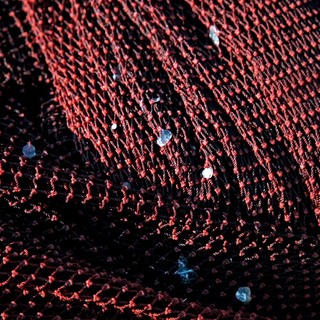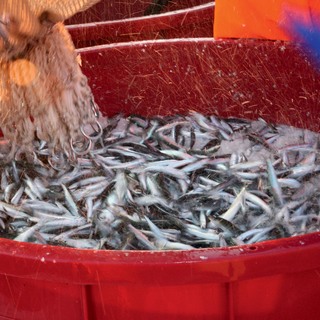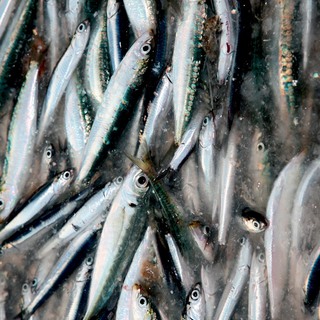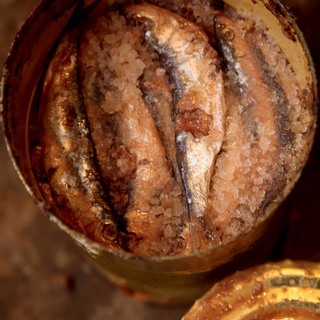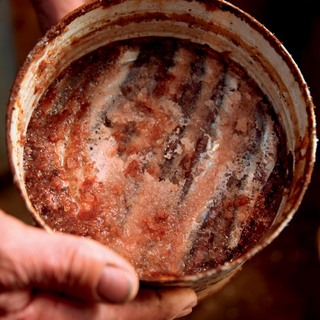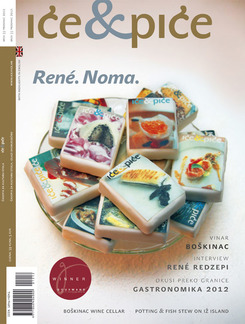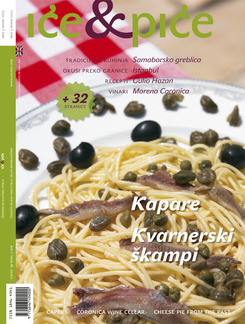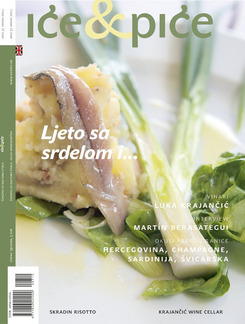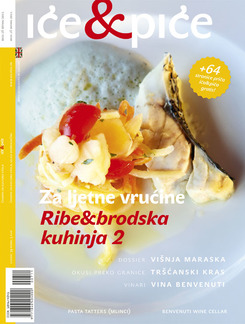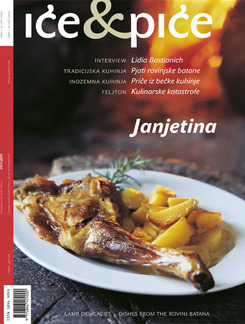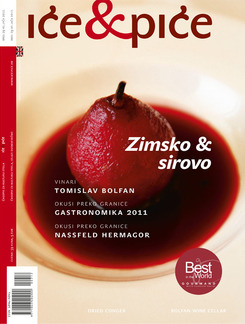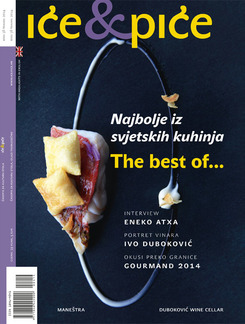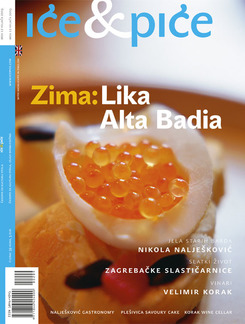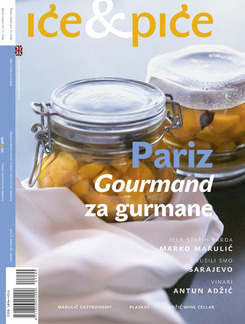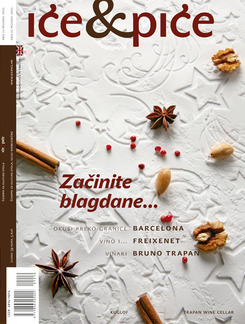From time out of mind the live sea has wriggled and squirmed in the nets of the islands of Central Dalmatia, and the written history of the catching of small pelagic fish was preceded by centuries of life with and from the sea. We can find the first reasonably accurate descriptions of fishing only at the beginning of the modern era. At the end of the fifteenth century, Paladije Fusco, Italian humanist and author of the Description of the Coast of Illyria wrote in his description of Vis that in May they caught and salted huge amounts of sardines. How really huge they were we can find from a report of Albani Giovanni Battista Giustiniano a century later, in 1553. The Venetian governor, slinking around Dalmatia with his eyes and ears open like a real Venetian recorded that in one day as much as 120,000 kilos of this little fish were caught: as many as three million individual fish. Yes, once, sardines, because of taxation of course, were counted in ones. The unit of measurement was the barrel, which depending on where you were could be smaller or bigger. A Šibenik barrel would hold about 3,000 fish, while a Trogir barrel was a bit smaller – from 2,200 to 2,500 fish. The price of a thousand, called a miliar, at the beginning of the sixteenth century was 7 librae/pounds in Šibenik, and at the end of the same century 13.5 librae. For a long time, salted fish was one of the most important products of the eastern coast of the Adriatic; the islands of central Dalmatia, just like area around Sardinia, Corsica and southern France, were known for their sardine catching. Although the medieval fishing technology is scattered in memory and fragments of written history, it is certain that as early as the 12th century sardine fishing was an important source of food and income for the island population of Hvar and Vis, whose history is inseparably connected with the boat called the falkuša and the sardine. In legends woven around the arrival of the Pope Alexander III in Dalmatia in the 12th century it was recorded that his ship took shelter from a storm on the island of Palmižana. Whether the local fishermen really fed the pope and his train with sardines and bread – a simple and everyday food for poor folk, which, thanks to its primordial simplicity, must have seemed wonderful to the sated palates of the well-fed big-wigs we shall leave to the gastronomic mythology of the area. But one thing is sure from history, and that is that the Vis fishermen were given absolution for fishing on Sundays and holydays in a Bull of this pontiff. And it was a tribute from a part of the sardine catch from every net with which the fishermen expressed their lasting gratitude to Alexander III that built Hvar Cathedral. The sardine, then, little and unprepossessing, was not only the nurturer but also the builder of the cultural space of the island communities.
Fishing in the Adriatic has lasted millennia, from the first Greek colonists, the Syracusans and the Farians, but rare are the documents older than the fourteenth century governing the issue of fishing. Vis, island that probably owes more than the others to the sardine, was governed by the Hvar commune, and there is some information telling us that the Vis fishermen as early as the 12th century were fishing around Palagruža. According to the researches of Grga Novak, in the fourteenth century they already knew the technique of fishing in summer with big nets. But there was no really intensive fishing for little oily fish until the middle of the fifteenth century, and it really took off during the sixteenth, when they began to use lights during sardine fishing. Today we might be surprised by how ordered the early fishing trade was when the price was to be set in an honourable way and according to the conditions (1475), and the importance of this becomes clear when we know that during a year there were at least 150 days on which fasting was enjoined. For the inland areas, preserved fish was of great importance – able to keep, reliable and, most importantly, cheap. On the markets of the Dalmatian towns fish was sold dried (mullet, whitebait, congers), salted (usually sardines, mackerel and anchovies) and fresh which was to be sold to the citizens, and only in the afternoon wholesale.
Eyes of the Serenissima
The Venetian Republic endeavoured to keep a monopoly on the sale of salted fish – as it did after all on salt itself and on spices, on everything, actually. When Venice had a monopoly on salt, it could have a monopoly on all food that kept. Most salted fish found customers in Venice, the wholesale market place of Europe. In spite of a ban on the export of salted fish to anywhere except Venice, salted anchovies and sardines were exported to other parts of Italy, to the Quarnero and Boka and Herzeg-Bosna. The laws of the Serenissima, although they did not restrict the locations of the fishing, were strict in determining the use of fishing gear. The centuries-long battle between the Venetians and the fishermen of Komiža about fishing practices, or the permanent ban on the use of the voyga net, long claimed its victims. The penalties for using the voyga, a smallish gill net, traditionally used by small fishing boats, were Draconian. From burning nets and boats to long sentences to the galleys. But the Komiža fishermen kept their nets. The seine nets used by bigger ships were on the whole the property of the Hvar nobles. On Vis there are still records of the owners of seine nets from 1740 until the fall of Venice, and this document gives not only information about the owners but also the dues that the fishermen had to give out of each catch. The more efficient nets that caught bigger quantities of pelagic fish certainly brought more money to the owners, who could easily lobby in Venice for their own ships and nets, but they did not manage to abolish the thread of history of the voyga Although persecuted, the Komiža fishermen kept the traditional nets, as one of the most important of the old pieces of gear. For want of written history, we usually resort to etymology, and according to Adriatic Etymologies voyga derives from Greek. So we can assume that it came in with the Greek colonists. But why did the Komiža fishermen fight so hard with the Venetians about nets? The fine mesh of the net caught each sardine separately, and they were taken out by hand, one by one. They would give themselves up to the fishermen with all their scales, and this method particularly protected the tender flesh during salting. When we know that the price of such sardines could be a third higher than those caught with seine nets, it is clear why the voyga was banned. But in spite of all the penalties, it was kept up in Vis until the middle of the 20th century. They were used in 1949, in a legendary catch which perhaps only the oldest can now remember. In that memorable year, 150 wagons of sardines were caught, a wagon being equivalent to 10 tons. Šime Županović, then a young researcher, followed the Komiža fishermen at the end of an epoch that shaped the whole history of that space. Not long before the beginning of the era of tourism, Županović followed the fishermen, recorded the rhythm of the work, the locations, beliefs and opinions. Before World War II there were about a thousand summertime fishermen in Komiža, and the rest of them worked in the five fish canneries on the island. Vis fishermen were known and valued worldwide. The trace of the sardine is inscribed into their migration and emigration routes, but let us leave that to historians like Joško Božanić, whom I asked if it was really true that the Vis fishermen brought the art of salting fish to Spain. He told me of the fishermen who fished around the Costa del morte, in Spanish Galicia. They really did improve the Spanish production of sardines at the end of the 19th century. They caught and salted sardines that they sent in seventy-kilo barrels to works where they were filleted and preserved in olive oil. Replacing the sea by oil, the sardines swam all the seas.
Sardine funeral
Sorrow for the famous past that was woven into the text about the outstanding catch of 1949 seemed to have stilled the voices of the older informants, the experienced fishermen with whom Županović talked. They wanted something different for their children, and that today there are almost no sardines on the island is respecting their wish. They wanted the children to have some other training. Some training after which their lives would be easier. They wanted their sons to be doctors and engineers, not to toil at sea like them. At the end of fishing history the old fishermen stated their wish, which was fulfilled. The factories went into history, the ships and the men changed, tourism could start.
Laid flat and squeezed in tins, like the coffin in which the Spanish bury the sardine on the last day of carnival, the Adriatic sardine travelled the world. From America to the Near East, where Kishon’s best wife in the world put them into already loaded supermarket shopping carts. The modest nurturer of the islanders became a delicacy, an hors d’oeuvre, an appetiser. In a summer evening, with a glass of wine and a few friends, with bread and wine, sardines whisper of their history.
